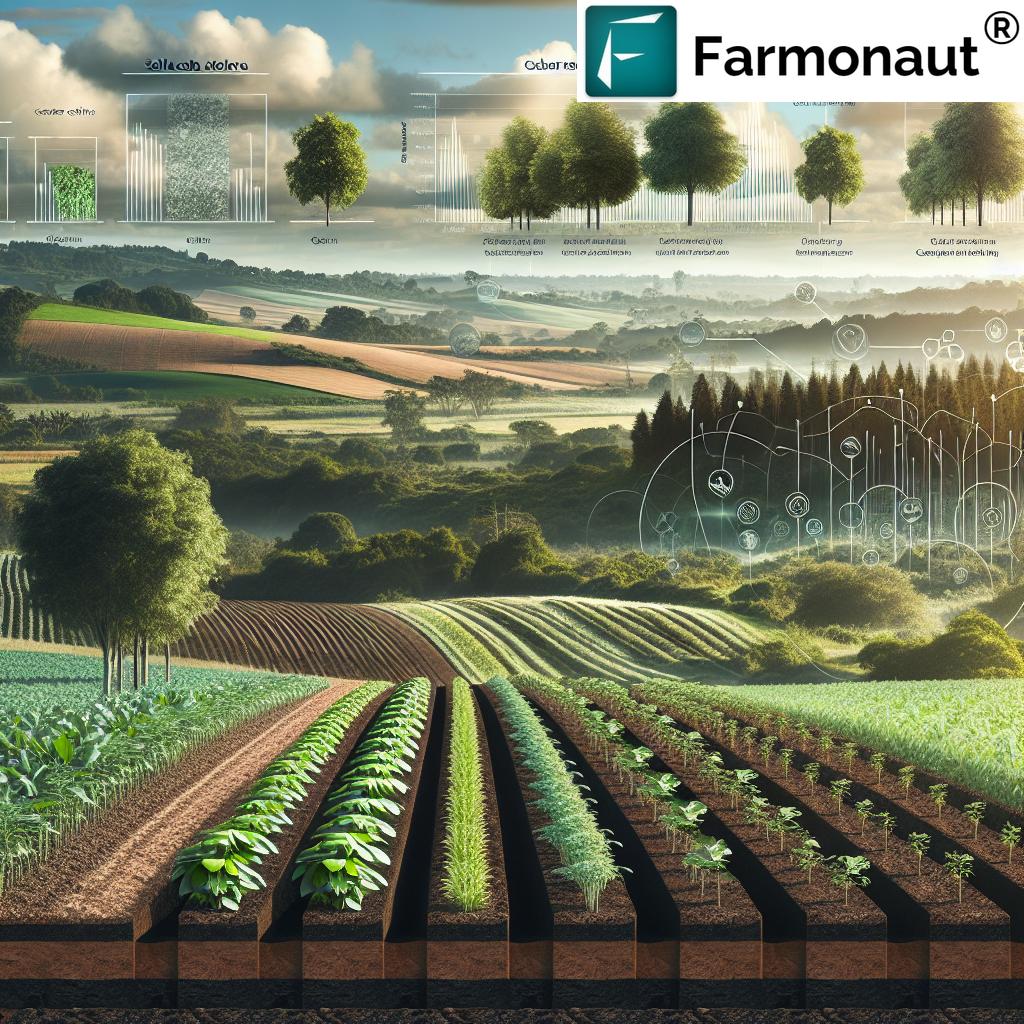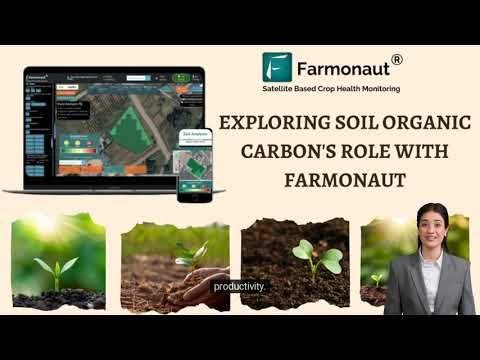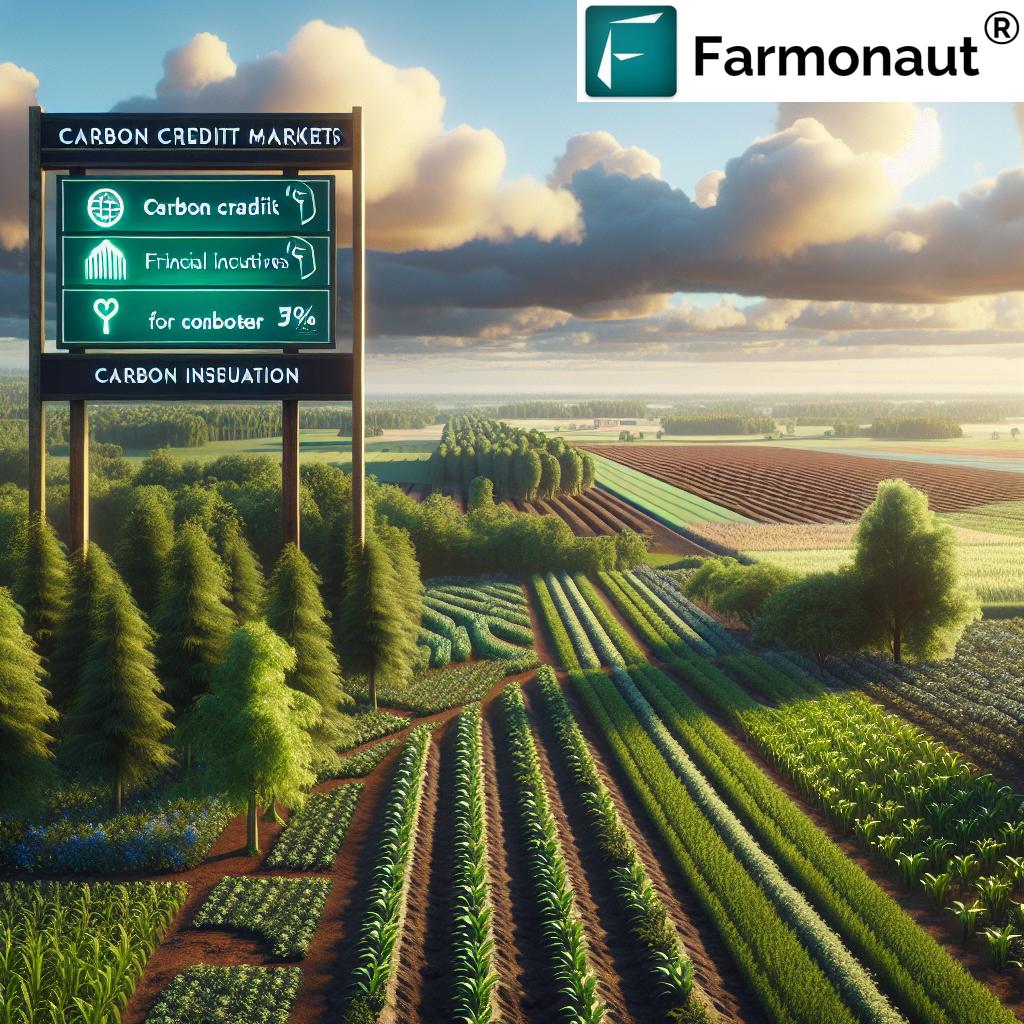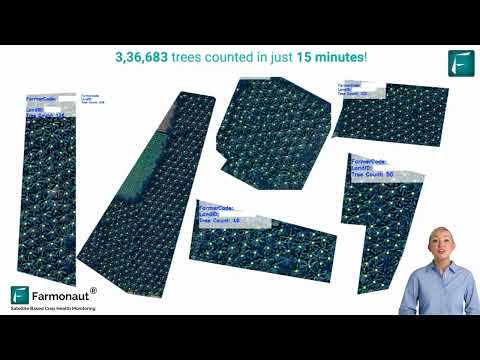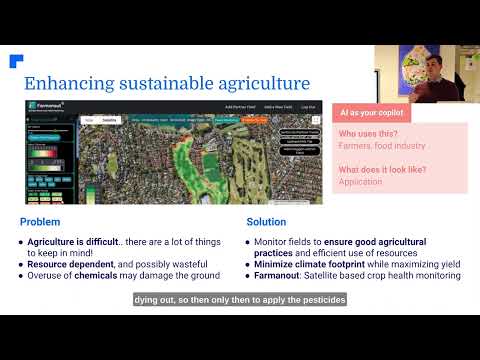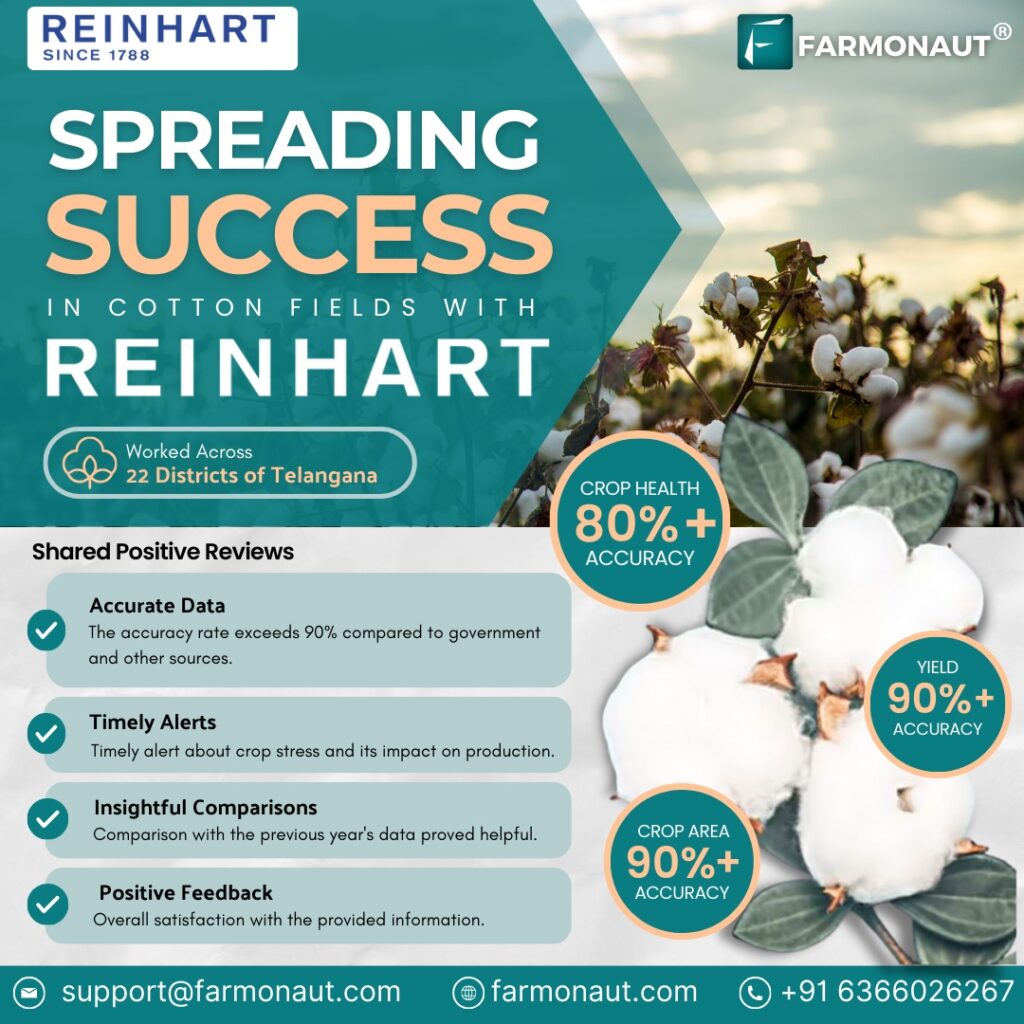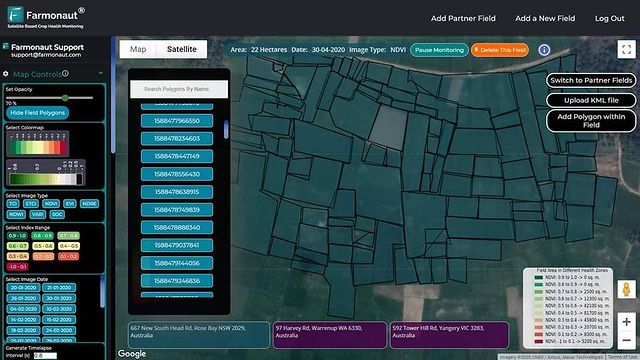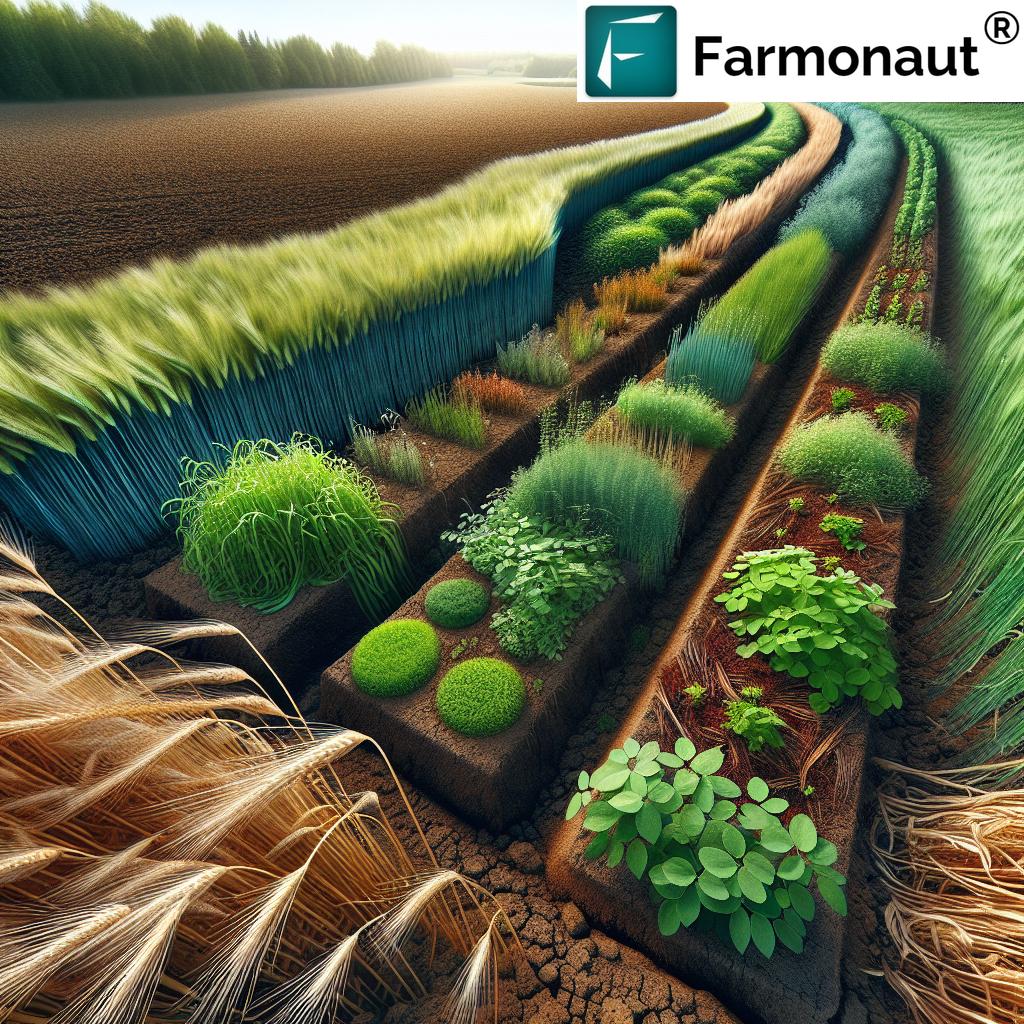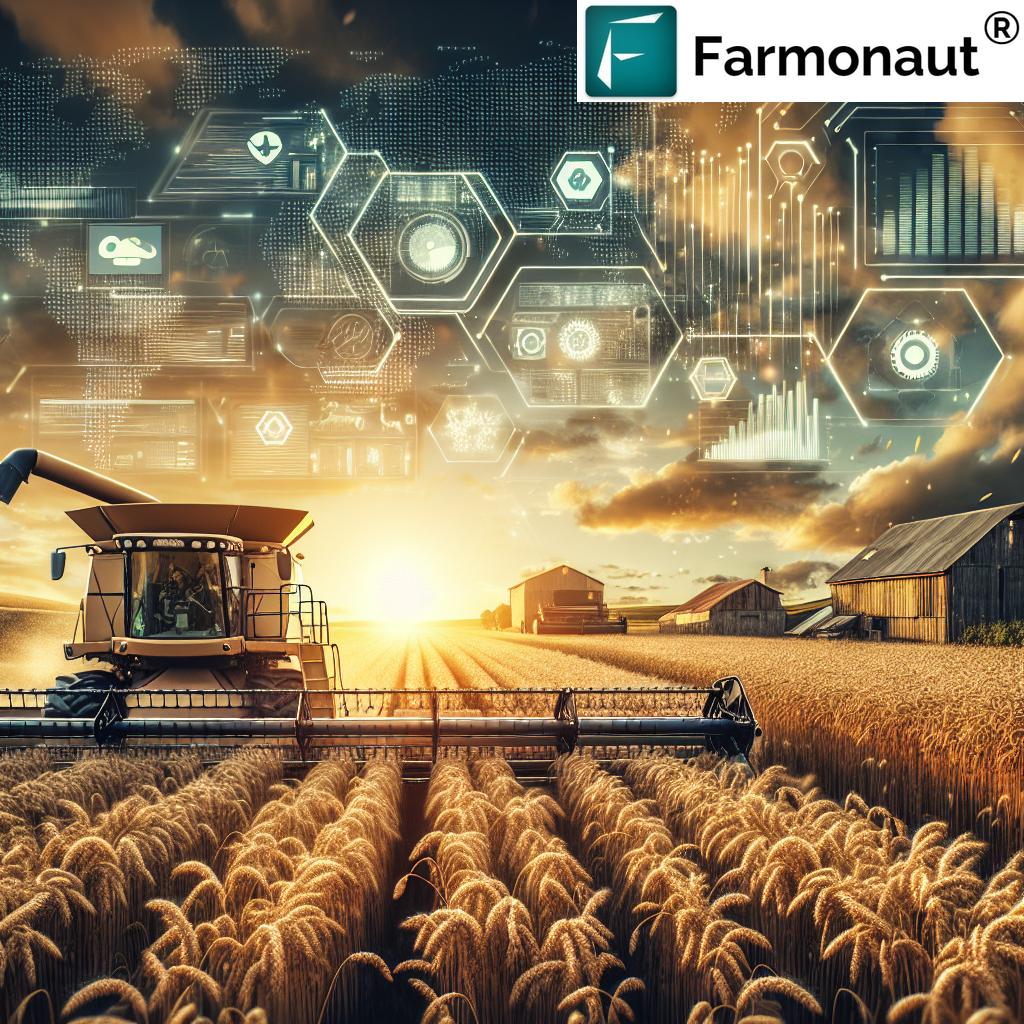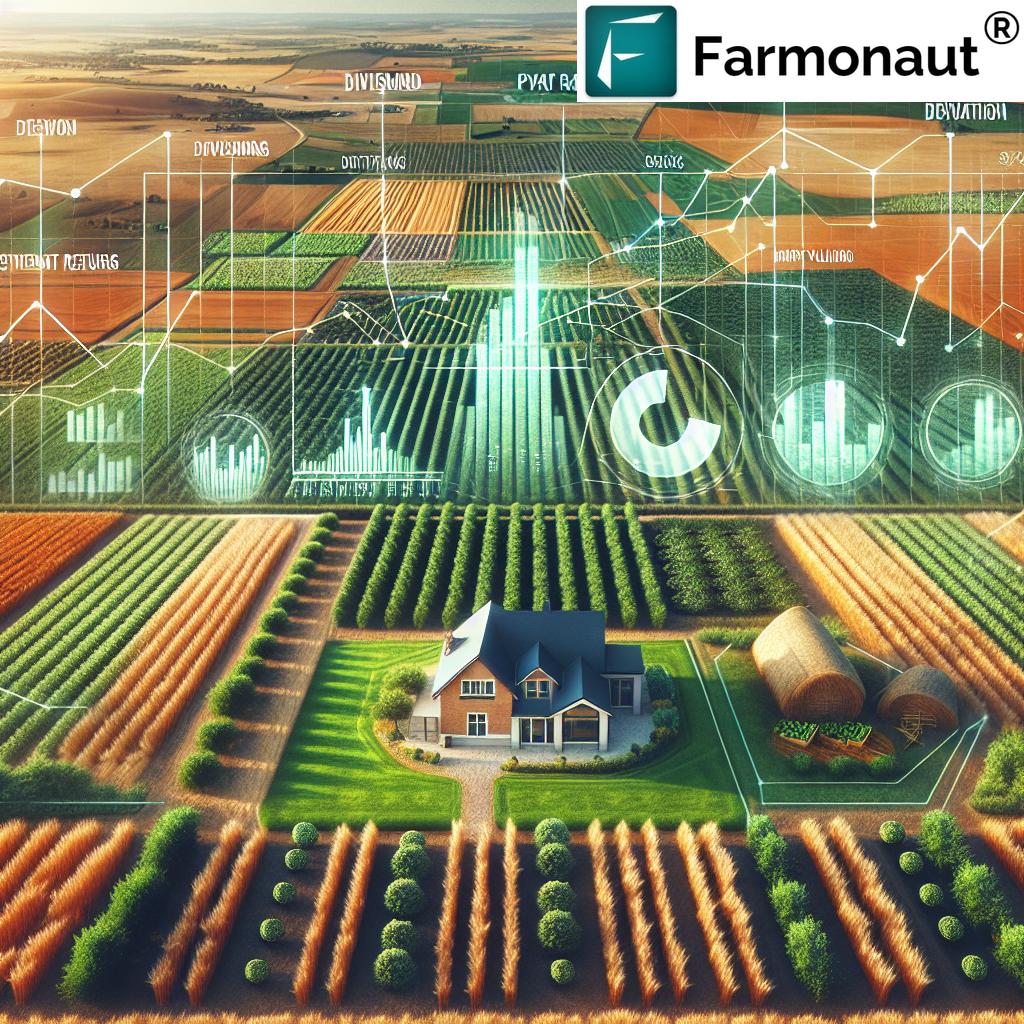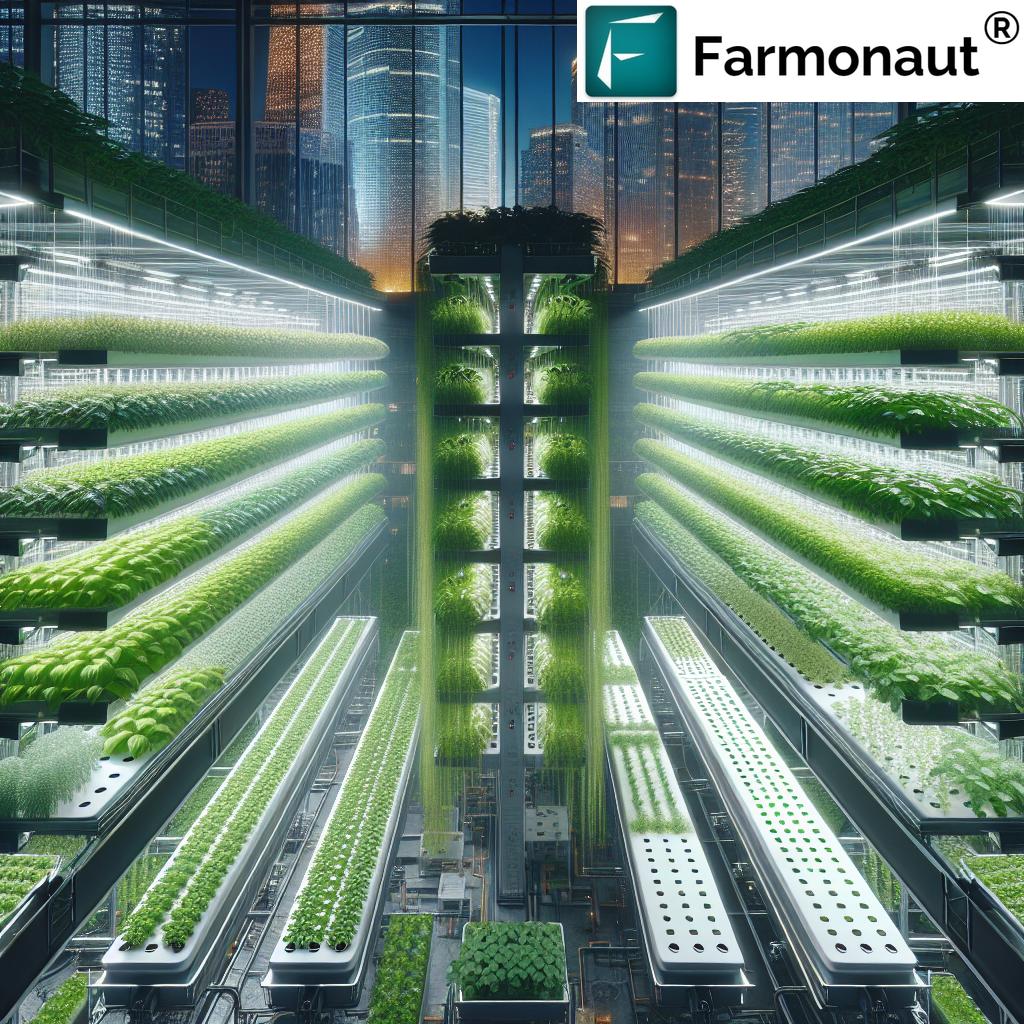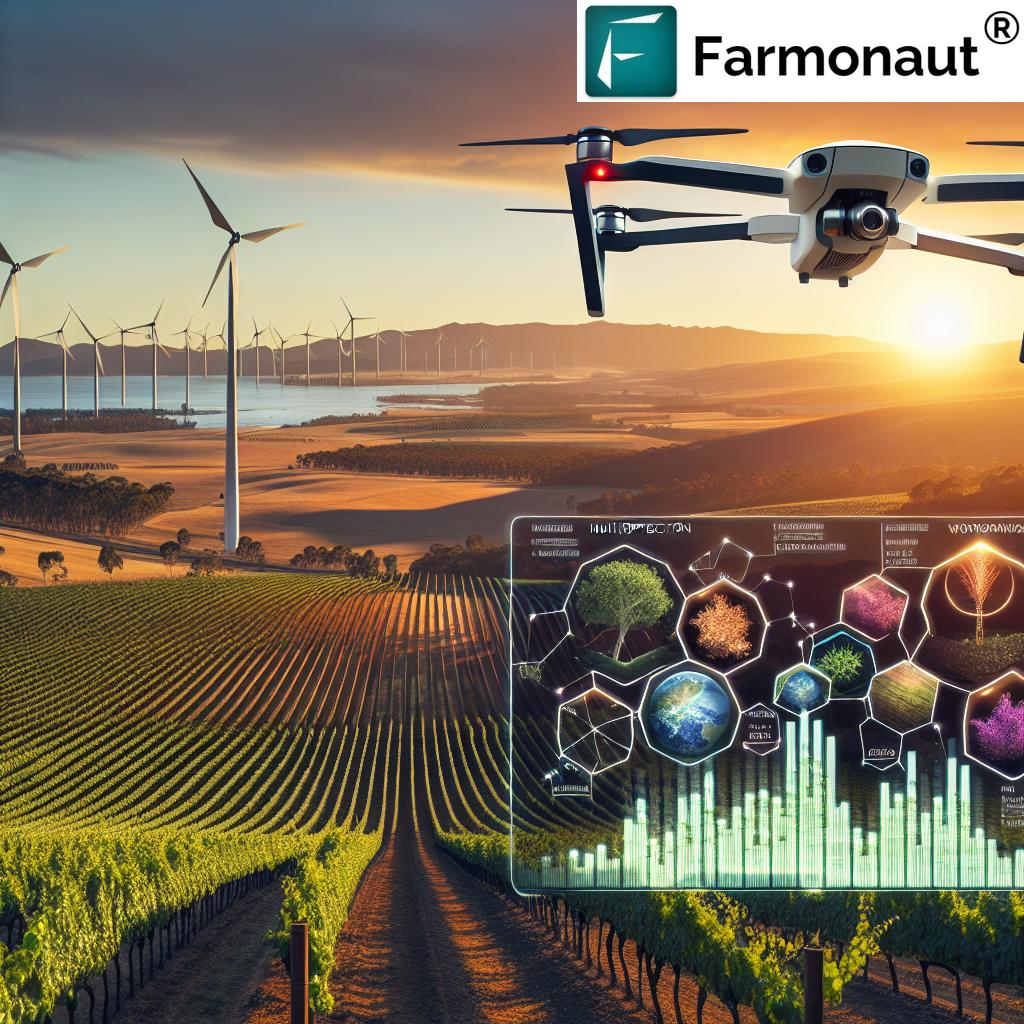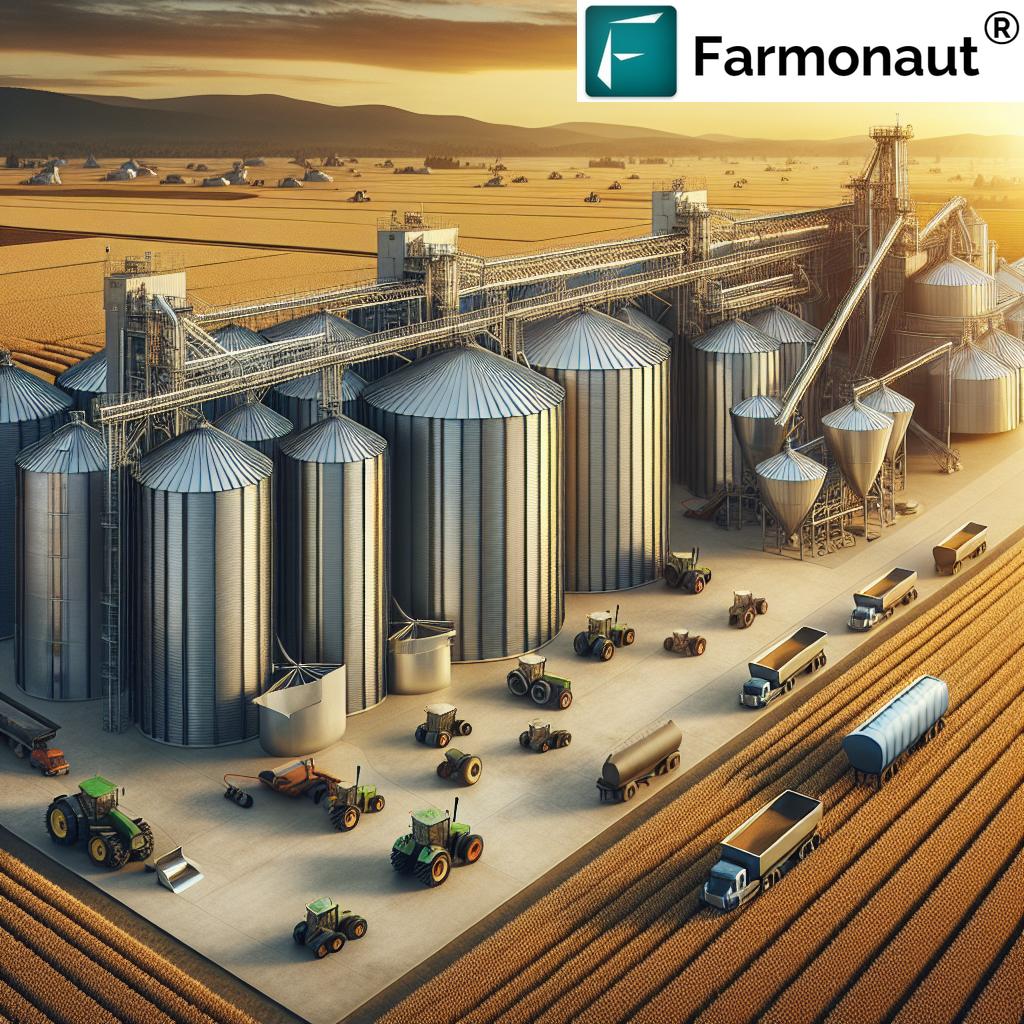Carbon Farmers: 7 Shocking Climate Hacks Revealed!
Introduction: Why Carbon Farming Matters
As the global impacts of climate change heighten—elevating atmospheric CO₂, disrupting food systems, eroding soil health, and threatening biodiversity—our need for bold, effective solutions grows urgent. Carbon farming stands at this ecological frontier, integrating agriculture and forestry to not just produce food and raw materials, but to actively capture and store carbon dioxide (CO₂) in soil, vegetation, and biomass.
We are now witnessing a significant paradigm shift—from exploitative agricultural practices to regenerative land management that not only mitigates climate change, but also rejuvenates ecosystem function, improves soil structure, and supports local economies. By uniting carbon farming methods like agroforestry, cover cropping, and reforestation, we—farmers, researchers, and informed citizens—gain the power to enhance biodiversity, boost food security, and generate economic opportunities.
In this in-depth guide, we unveil the 7 shocking climate hacks transforming carbon sequestration in agriculture, demystifying the science and the practical steps every land steward can take. Let’s dive in and discover how these sustainable farming practices are shaping our future!
Top 7 Climate Hacks in Carbon Farming
Adaptation is not optional. To deliver real climate impact, carbon farming relies on stacking various soil and land-use practices proven to maximize carbon sequestration. Here are the seven most impactful methods that offer a blueprint for transition to low-carbon agriculture:
-
1. Agroforestry: Trees, Shrubs, and Biodiversity Integration
Agroforestry practices involve integrating trees and shrubs with traditional crop farming systems or livestock grazing. This not only sequesters carbon in above- and below-ground biomass but also:
- Boosts soil organic matter and microbial activity
- Enhances biodiversity by creating habitats for various species
- Improves microclimate, moisture retention, and prevents soil erosion
Scientific studies in Brazil highlight that combining agriculture with reforestation helps revive degraded soil and restore whole ecosystems (source). Such efforts not only mitigate climate change through carbon capture but also unlock new economic opportunities for farmers in biodiversity services and carbon credit markets.
-
2. Cover Cropping: The Soil Armor for Carbon Farmers
Cover crops (like clover, vetch, rye, or mustard) are grown during off-seasons or between cash crops, helping to protect soil surface, prevent erosion, and boost soil health. The cover cropping benefits include:
- Increase organic matter and facilitate carbon retention in soil
- Fix nitrogen and enhance microbial activity
- Reduce need for chemical inputs, weeds, and pests
Numerous studies link cover cropping to measurable soil carbon storage and increased yields over time. The natural cycle of decomposition also feeds soil microbes, fortifying the rhizosphere for future crops.
-
3. Reduced Tillage: Protecting the Living Structure of Soil
Conventional tillage—deep plowing, disking, and loosening—disturbs the soil matrix, releasing stored carbon dioxide and disrupting soil microbes. By contrast, reduced tillage or no-till farming involves minimizing soil disturbance, which:
- Maintains soil structure—critical for water and nutrient retention
- Increases carbon sequestration in agriculture (source)
- Promotes beneficial earthworms and microbial diversity
- Reduces labor and energy costs while minimizing erosion
Continuous no-till practices, especially when combined with cover cropping, offer a synergistic approach to building soil health and storing atmospheric carbon efficiently.
-
4. Reforestation & Afforestation Projects: Restoring Carbon Sinks
Reforestation means planting trees on degraded lands, while afforestation targets areas previously lacking any forest cover. Both approaches are leading contributors to atmospheric carbon dioxide removal and ecosystem restoration.
- Absorb and store massive amounts of CO₂ above and below ground
- Create corridors for wildlife and support biodiversity enhancement
- Reduce flooding, salinity, and local temperature extremes
In Scotland, high-impact reforestation projects have sequestered significant carbon, though local opposition sometimes surfaces around land use and biodiversity balance (source). Done right, these projects address climate, environmental, and economic resilience.
-
5. Improved Grazing Management: Grazing for Carbon Capture
Grazing livestock often gets a bad rap in the climate conversation. However, rotational grazing systems, adaptive multi-paddock grazing, and managed rest periods can:
- Stimulate plant regrowth and thus increase carbon sequestration in pastures
- Enhance soil structure; prevent overgrazing and compaction
- Promote biodiversity and improve water retention
These methods improve soil health while capturing carbon—turning animals into allies for climate change mitigation in farming.
-
6. Biochar Application: Locking Carbon in the Soil
Biochar is a carbon-rich charcoal produced from plant material (biomass) under low-oxygen conditions—a process that traps carbon for hundreds or thousands of years. When incorporated into agricultural fields:
- It boosts soil organic matter and water/nutrient retention
- Acts as a long-lasting carbon sink and reduces need for synthetic fertilizers
- Reduces greenhouse gas emissions from soil
With further research and best practices, biochar’s role in carbon sequestration in agriculture is only set to grow.
-
7. Enhanced Crop Rotations: Breaking the Carbon Plateau
Diverse crop rotations—rotating different plants, especially deep-rooted or leguminous species—help improve soil carbon stocks by:
- Increasing soil organic matter over time by encouraging deeper rooting and less soil exhaustion
- Disrupting pest cycles, reducing chemical input dependence
- Improving resource use efficiency and aggregate carbon capture
This practice supports soil health improvement, crop yields, and biodiversity enhancement, pushing the boundaries of carbon sequestration.
How Carbon Farming Benefits Our Planet
Let’s break down why these carbon farming practices matter far beyond a farm gate:
- Climate Change Mitigation: By capturing and storing atmospheric CO₂, farmers actively reduce greenhouse gas concentrations. Every acre managed for carbon can help combat global warming.
- Soil Health Improvement: Practices like cover cropping, reduced tillage, and organic matter supplementation drive resilient soil structure, increase nutrient cycling, and build drought tolerance.
- Biodiversity Enhancement: Introducing agroforestry or diversified cropping creates habitats for species variety, promoting ecosystem conservation and pollinator health.
- Economic Opportunities: Participation in carbon credit markets enables farmers to earn financial incentives for carbon sequestration. Like the Biden administration’s investments, such initiatives can uplift smallholders through income diversification (source).
- Water and Nutrient Management: Improved soil structure maximizes water infiltration and retention—vital for climate-resilient agriculture.
- Community Resilience: Practices that heal land and store carbon also improve yields, which means more stable food production and opportunities for rural communities worldwide.
For those eager to track, measure, and optimize the carbon footprint of their agricultural activities, tools like Farmonaut’s Carbon Footprinting solution empower users to monitor real-time emissions and take steps towards sustainability.
Overcoming Challenges in Carbon Sequestration
While the promise of carbon sequestration in agriculture is immense, several challenges must be addressed for large-scale, lasting impact:
-
Measurement and Verification:
- Quantifying soil carbon storage accurately is complex and costly.
- Lack of standardization in measurement tools and protocols hinders development of robust carbon markets.
- Reliable technologies for soil carbon measurement are essential to scale up credits and financial incentives (source).
-
Permanence and Leakage:
- Stored carbon can be released back into the atmosphere if practices are reversed or disrupted (e.g., due to droughts, tillage, or fire).
- Leakage occurs when sequestration in one area triggers increased emissions elsewhere.
-
Farmer Hesitancy & Uncertainties:
- Concerns over long-term commitment, uncertain return on investment, and chances of yield reduction deter farmers from adopting such methods (source).
-
Market Volatility:
- Carbon credit prices fluctuate, introducing financial risk and uncertainty for farmers.
- The absence of a unified carbon market impedes wide adoption and consistent incentives (source).
With the integration of data-driven technologies and improved support structures, many of these barriers can be methodically addressed.
Innovative Technologies for Soil Carbon Measurement
Technological innovation is proving a game-changer for climate change mitigation in farming. Here are key advancements:
- Artificial Intelligence (AI): AI models analyze satellite and in-field data to automate monitoring, reporting and verification (MRV) processes for soil carbon sequestration, increasing accuracy and scalability (source).
- Remote Sensing & Data Analytics: Satellite imagery enables detailed insights into vegetation health, soil moisture, organic matter, and other critical soil metrics. Data analytics help farmers make informed decisions, track changes over time, and validate carbon credits.
- Blockchain Traceability: Using blockchain, agricultural traceability solutions securely log events from field to fork—boosting transparency and trust. Visit Farmonaut’s Traceability page for dependable and tamper-proof agricultural records.
- Mobile and API Access: User-friendly dashboards and API integration (learn more at Farmonaut API) allow both individuals and businesses to access farm-level insights and integrate carbon monitoring into their own solutions. Developer resources are available here.
These tools not only simplify data collection, but ensure precise verification and unlock wider participation in global carbon credit markets.
Policies and Financial Support for Carbon Farmers
For farmers and agribusinesses seeking to maximize the impact of carbon farming practices, supportive public policy and economic frameworks are crucial. Here’s how:
-
Subsidies and Grants:
- Government or environmental NGOs can provide direct aid to offset initial costs of new carbon-conscious agricultural methods.
-
Robust Carbon Credit Markets:
- Ensuring transparent, voluntary carbon credit markets allows farmers to generate income through verified carbon sequestration.
- The U.S. administration has set precedents by providing financial access to small-scale forest land owners.
-
Research and Extension Services:
- Ongoing investment in applied research and community extension services is required for local capacity building and adaptation to new practices.
-
Insurance and Risk Management:
- Innovative insurance products can reduce the risks associated with uncertainties inherent in climate, permanence, and crop yield. Farmonaut’s crop loan and insurance verification service (details) leverages satellite data to streamline and secure crop loans and insurance claims.
These combined efforts drive adoption, ensure permanence of stored carbon, and make the climate transition a real opportunity for all stakeholders.
Comparison Table: Practices vs Environmental Benefits
| Practice Name | Method Description | Estimated Carbon Sequestration (tons CO₂e/ha/year) |
Biodiversity Impact (Variety Increase) |
Soil Health Improvement | Additional Benefits |
|---|---|---|---|---|---|
| Agroforestry | Integrates trees/shrubs into farming systems | 5–9 | High (up to 30% increase) | High | Habitat creation, microclimate regulation, N-fixation |
| Cover Cropping | Planting crops to cover soil post-harvest/season | 1–3 | Medium | High | Reduces erosion, weed/pest control, boosts yields |
| Reduced/No-Till | Minimizes soil disturbance (no plowing) | 0.5–1.5 | Medium | Medium/High | Lower fuel costs, water retention |
| Reforestation & Afforestation | Planting trees/shrubs on degraded or treeless lands | 8–15 | High | Medium/High | Flood prevention, land restoration |
| Improved Grazing Management | Rotational livestock grazing with rest periods | 2–4 | Medium/High | High | Water retention, pasture productivity |
| Biochar Application | Incorporation of carbon-rich biochar into soil | 1–3 | Low/Medium | High | Long-term carbon storage, improved fertility |
| Enhanced Crop Rotations | Diverse, multi-year sequence of different crops | 0.7–2 | Medium | High | Pest break, yield stability |
Farmonaut: Enabling Sustainable Carbon Farming
We believe that the future of sustainable agriculture is digital, accessible, and data-driven. Farmonaut is at the cutting edge of this transformation—integrating satellite imagery, AI, machine learning, and blockchain to empower farmers, agribusinesses, and policy makers globally.
-
Real-Time Crop & Soil Health Monitoring:
- Our platform uses multispectral satellite images to monitor vegetation health, soil moisture, and organic matter, providing vital insights for improved resource management.
-
AI-Based Advisory Systems:
- The Jeevn AI Advisory System delivers personalized recommendations on crop management, leveraging satellite data analytics for greater farm productivity.
-
Blockchain Traceability & Transparency:
- Our blockchain-based systems assure fraud-proof, transparent tracking of product origins—enhancing both traceability and consumer trust.
-
Fleet & Resource Management:
- Smart management of vehicle fleets, machinery, and logistics further reduces costs and environmental footprint (Learn More).
-
Satellite-Driven Verification for Financing:
- Banks and insurers access reliable, satellite-verified farm data—speeding up the distribution of loans and reducing the risk of fraud.
Whether you’re running a small farm or managing vast plantations, Farmonaut customizes solutions to enhance yields, reduce costs, and achieve measurable sustainability targets. Going beyond just monitoring, we empower users to act—leveraging real-time information to advance climate change mitigation in farming.
Try our Large Scale Farm Management tools for tailored resource optimization and scaling (details). For advice on crop plantation or forest advisory, explore Farmonaut’s advisory services.
Subscribe to Farmonaut
Ready to transform your approach and participate in the carbon farming revolution? Our flexible subscription options empower everyone—from single-acre farmers to large agribusinesses and government programs. Just choose your package and get started with precision agriculture today!
FAQ: Your Carbon Farming Questions Answered
What exactly is carbon farming?
Carbon farming refers to a set of agricultural and forestry practices that help capture, sequester, and store atmospheric carbon dioxide in soil, vegetation, and biomass. The goal is to mitigate climate change while improving soil health, increasing yields, and enhancing biodiversity.
Which practices are most effective for carbon sequestration?
High-impact methods include agroforestry, cover cropping, reduced tillage, reforestation, managed grazing, biochar application, and extended crop rotations.
How can farmers benefit financially from carbon farming?
By implementing carbon farming practices and tracking their sequestration, farmers can earn carbon credits and sell them on carbon markets. This provides a new, sustainable source of income while supporting environmental goals.
What technologies support accurate soil carbon measurement?
Satellite imagery, artificial intelligence (AI), blockchain, and remote sensing all play critical roles. Platforms like Farmonaut provide real-time, field-level monitoring, verification, and data analytics to support scalable carbon sequestration initiatives.
Are there risks or uncertainties in carbon farming?
Yes. Permanence, leakage, measurement complexity, and market volatility are important factors. Mitigating these involves robust data, supportive policy, and ongoing innovation in technologies and services.
How do I start with Farmonaut for carbon monitoring?
Simply sign up via our web or mobile app, explore our API (here), or visit our subscription options above for precision agriculture & carbon farming tools.
Conclusion: Embracing a Low-Carbon Tomorrow
The science is clear, and the opportunities are here. By integrating agriculture, forestry, and technology, we have the potential to shift our food systems from carbon sources to carbon sinks. Carbon farming equips us to heal our planet—mitigating climate change, improving soil health, enhancing biodiversity, and bringing new economic growth to agricultural communities.
With smart policy support, farmer education, and real-time technologies like those of Farmonaut, the transition to climate-smart agriculture is within everyone’s reach. Let’s seize this moment for a resilient, sustainable, and thriving future.
For further reading on carbon management or to begin tracking your farm’s emissions, visit our dedicated Carbon Footprinting page.


